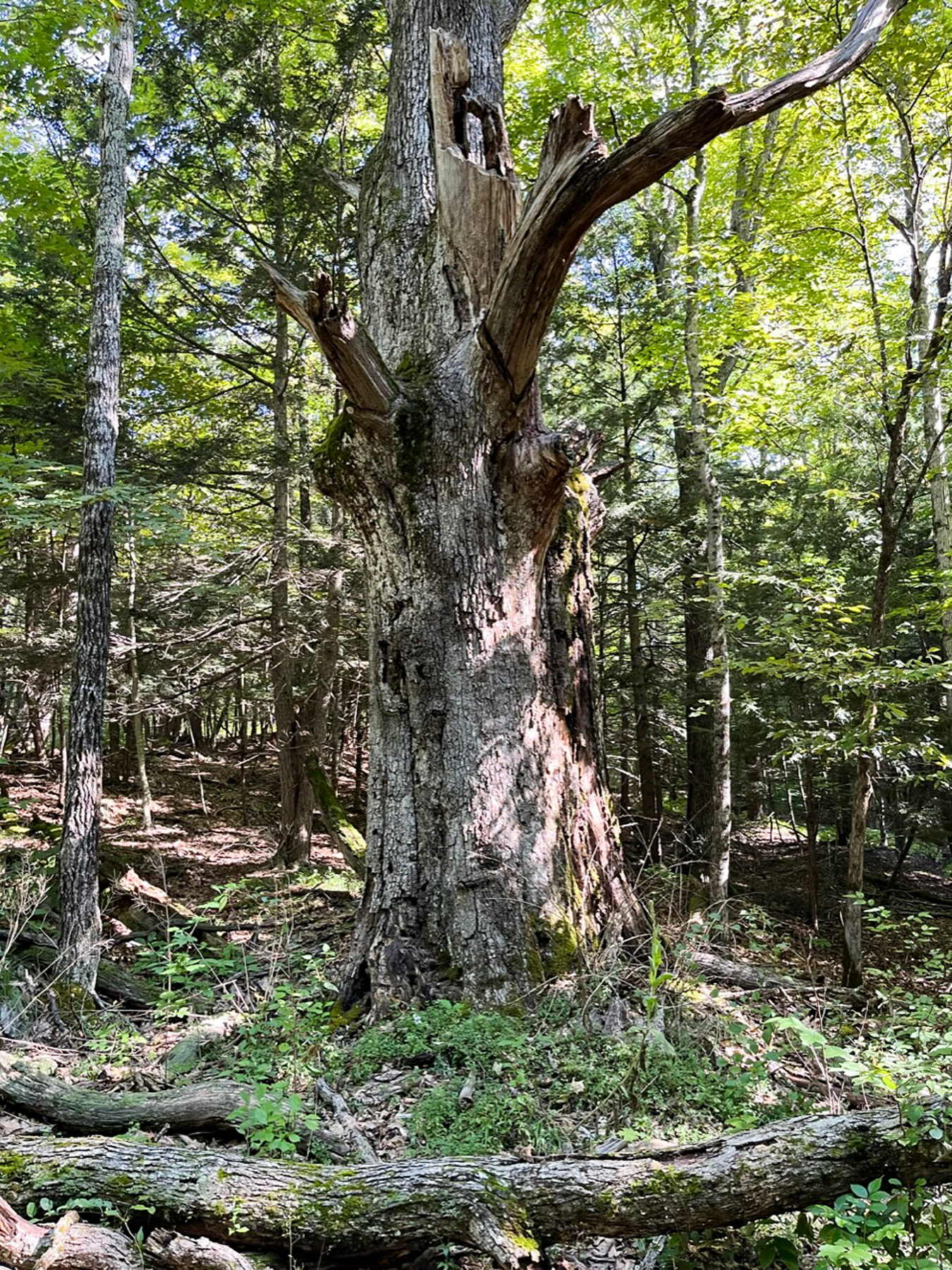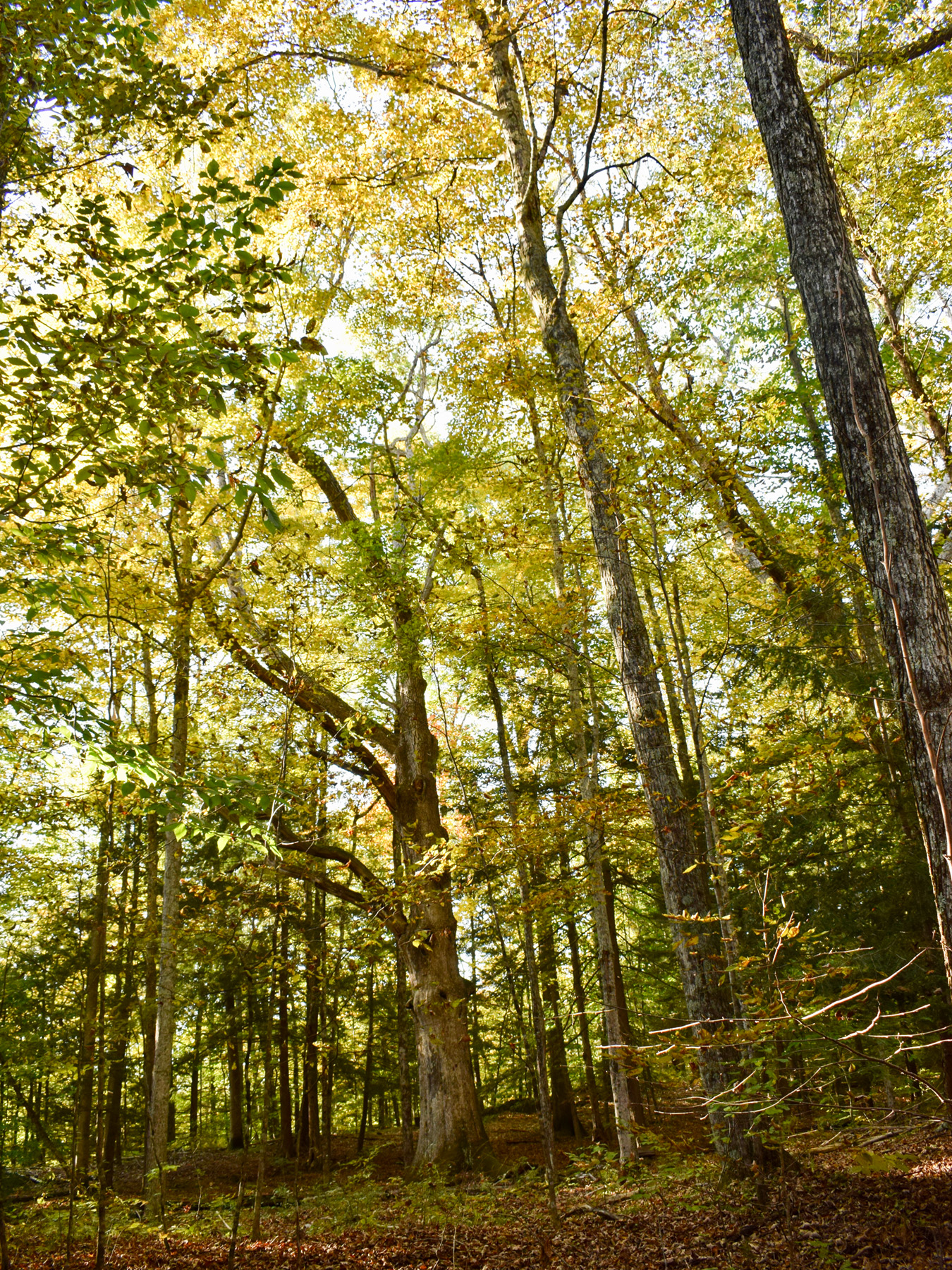
The Canoe Brook Nature Preserve was donated to Green Mountain Conservancy in October, 2023 by heirs of the Knight Family. The property has been owned by the Knight family since the late-1700s. The Canoe Brook Nature Preserve, a 115-acre property located near the northeast corner of Dummerston, will remain undeveloped in perpetuity.
The Knight family features heavily in both the 1884 and 1990 published histories of Dummerston, going back to Jonathan Knight, who moved to the town in 1774 and was the Town Clerk from 1775-1780. Joel Knight, one of Jonathan Knight’s sons, bought the land that is now the Canoe Brook Nature Preserve, likely in the 1780s, and the family farmed it for generations. Prior to the arrival of European settlers, this was land of the Abenaki Nation.
The Knight name is known to many Dummerston residents from the prominent house on the green in Dummerston Center, known as the Asa Knight House. The Hon. Asa Knight was a grandson of Jonathan Knight, and in the early-1800s he began operating the Asa Knight General Store at the corner of East-West Road and Middle Road in Dummerston Center. In 1972, the general store was dismantled and then reassembled in Sturbridge Village in Massachusetts, where it is on permanent display, looking as it did when Asa Knight owned it.
All of the buildings on the Canoe Brook Nature Preserve are long gone, but cellar holes and stone walls remain visible in places.
Roughly a half-mile of Canoe Brook crosses through the Preserve. Though there is erosion in places, this pristine brook rises on the shoulder of Putney Mountain about three miles northwest of the Preserve and flows into the Connecticut River about a mile to the southeast.
The woodland at the Canoe Brook Preserve is dominated by white pine, hemlock, sugar maple, red oak, white oak, white ash, and black birch. Some of these woodlands offer an inviting, open understory, while other areas are seeing significant growth of saplings. Past forest management has helped to control invasive buckthorn, but re-growth is now occurring, requiring follow-up control.
Of particular note in the Preserve are a dozen or more massive, ancient white oak trees, which date from the 1700s or early-1800s. Daniel Dubie, a forest ecologist and board member of GMC, explained that these trees, including Vermont’s second-largest white oak specimen, “grew in the open initially, when most of the land in Dummerston was cleared for farming or pasturing sheep.” Many of the huge sweeping limbs of these trees have fallen, and the trees are now surrounded by woodland.
The Canoe Brook Nature Preserve has been managed for timber and ecosystem health since at least the 1940s, with periodic timber harvests. “The intent moving forward,” according to Dubie, “will be to maintain healthy biodiversity, provide for low-impact recreation, and support the transition to old-growth forest characteristics—in keeping with the mission of the Green Mountain Conservancy.”
GMC Board member, Alex Wilson, is taking the lead in the stewardship committee that has been established for the Preserve. “The Stewardship Committee will be advising the board on a wide range of policies relating to management of the preserve, as well as helping us identify parking areas, hiking trail options, and the proper balance between recreational uses of the land and ecosystem protection.”



